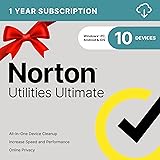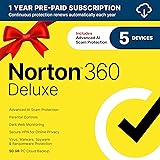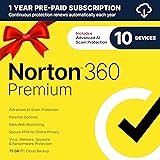Imagine waking up to a day that’s all about your dreams, not a clock. Becoming an entrepreneur lets you ditch daily routines for exciting opportunities. You get to make your own rules, follow your passions, and grow your wealth on your terms.
Starting small doesn’t limit your dreams. Every day, entrepreneurs turn their ideas into thriving businesses, even with little money. This guide will show you how to break free from the daily grind and achieve lasting success.
Key Takeaways
- Entrepreneurs control their time and finances.
- Freedom starts with taking the first step toward independence.
- Success begins with a clear vision and smart choices.
- Even small investments can grow into big ventures.
- Anyone can start a business with the right mindset.
Understanding the Entrepreneurial Mindset
Entrepreneurship is more than a job—it’s a way of thinking. Successful entrepreneurs live by entrepreneurship rules that help them face fear and doubt. They see challenges as chances to grow, turning obstacles into stepping stones.
- Resilience: Setbacks are part of the journey. Every failure teaches lessons to fuel future success.
- Creativity: Finding unique solutions separates innovators from the crowd. Think outside the box to stand out.
- Strategic Thinking: Planning ahead ensures decisions align with long-term goals, not just quick fixes.
“Entrepreneurship isn’t about having the perfect plan—it’s about moving forward with courage.”
Building this mindset means embracing risk and learning from every experience. It’s what lets entrepreneurs pivot, adapt, and stay focused on their vision. Whether starting a tech startup or a local business, this mindset drives action over hesitation. By adopting these traits, you’re ready to leave the 9-to-5 behind and build a business that grows with your ambitions.
Breaking Free from the 9-to-5 Grind
Traditional jobs can feel like a prison. They come with fixed hours, someone else’s goals, and little room for creativity. Start-ups offer a way out. It’s time to think about new options.
Identifying the Limitations of Traditional Work
Many face these barriers every day:
- Rigid schedules: Being tied to a clock set by others.
- Limited creativity: Having your ideas blocked by company rules.
- Financial ceilings: Earning a salary that doesn’t grow with your success.
| Traditional Work | Start-up |
|---|---|
| Fixed hours | Flexible time management |
| Top-down decisions | Your voice shapes the future |
| Paychecks without ownership | Build equity in your own success |
Finding Motivation for Change
“The only way to do great work is to love what you do.” — Steve Jobs
Passion is the key to change. Imagine designing your day, solving problems your way, and earning rewards based on your effort. Start-ups succeed when founders love their work. Ask yourself: What problem do you want to solve? How can your skills add value?
Every start-up starts with one step. Recognize what’s holding you back, then act. Your freedom begins today.
Laying the Foundation for Your Own Business
Every successful business owner starts with a solid base. First, define your core purpose—what problem will your business solve? Then, write a clear mission statement to guide your decisions.
Research your competitors and what customers need. This helps you find gaps in the market.
“Starting a business requires courage, but building it demands discipline.”
| Step | Action |
|---|---|
| 1 | Create a detailed business plan outlining goals and strategies. |
| 2 | Register your business legally and choose a structure like LLC or sole proprietorship. |
| 3 | Secure initial funding through savings, loans, or investors. |
Use free tools like Google Analytics for market analysis. Business owners with limited funds can use social media for marketing. Focus on quality products and customer service first.
- Outline core values to shape your brand identity
- Track progress weekly to adjust strategies
- Build an emergency fund for unexpected costs
Remember, even small steps today can make a big difference. A strong foundation helps your business grow steadily. Start now—your journey as a business owner begins today.
Creating a Strategic Business Structure for Success
Starting a small business means having a solid plan. Every choice should help reach your long-term goals. This ensures everything works well together. Let’s look at how to create a framework that grows easily.
“The entrepreneur usually sees what everyone else sees but thinks what no one else thinks.” – Steve Jobs
Designing Your Business Model
First, figure out how your small business makes money. Think about these models:
| Model Type | Description | Best For |
|---|---|---|
| E-commerce | Sell products online via platforms like Shopify. | Retailers or product-based ventures. |
| Subscription | Recurring revenue streams (e.g., monthly memberships). | Services or digital content. |
| Service-Based | Charge for skills like consulting or freelancing. | Professionals or niche experts. |
Implementing Efficient Systems
Make your workflow easier by automating tasks. Start with:
- Project Management: Tools like Trello or Asana track tasks.
- Financial Tracking: Use QuickBooks or Wave for invoicing and budgets.
- Automation: Zapier connects apps to reduce manual work.
A small business can make operations smoother by using these tools. Choose systems that grow with your team. This helps avoid chaos as you get bigger.
Building an Empire on a Budget
Every founder knows starting big isn’t necessary. Smart founders turn limitations into advantages. They use creativity to grow while saving cash. Focus on tools and strategies that multiply effort without overspending.
Start with free or low-cost tools that deliver results. Canva for design, Google Workspace for communication, and Shopify’s free trial for e-commerce setups reduce initial costs. Outsourcing tasks on Upwork or Fiverr lets founders scale without hiring full teams.
“The best investments are those that grow with your business.”
| Essential Investments | Non-essential Expenses |
|---|---|
| Website domain hosting ($10/month) | Premium software bundles |
| Social media ads | Branded office space |
| Customer feedback tools | Corporate branding kits |
Prioritize spending on assets that directly boost sales or customer reach. A founder should invest in a reliable website before buying branded mugs or high-end equipment. Track ROI on every dollar spent to avoid wasteful choices.
Overcoming Financial Constraints in
Start-ups

Innovation can push forward, even with tight budgets. Start-ups can do well by finding creative solutions to money problems. Let’s look at smart ways to turn limits into chances.
- Use free or low-cost tools like Google Workspace for collaboration.
- Pitch to crowdfunding platforms like Kickstarter or GoFundMe for community support.
- Partner with other businesses for shared resources and expertise.
“Start small, but think big.” – Sara Blakely, founder of Spanx
Change your approach as you grow. Try different pricing models, keep track of spending, and ask customers what they value. Many big companies, like Airbnb, started with little money but grew through smart choices.
Focus on what’s important. Spend on quality websites or marketing that really works. Use social media to grow your audience without spending a lot. Every dollar is crucial, but so are new ideas—often, innovation comes from needing to find a way.
Every problem is a chance to try something new. Stay open to change and keep trying. Your big idea might just be one creative solution away.
Entrepreneur Essentials: Crafting Your Vision
Your journey as an entrepreneur starts with a clear vision. The entrepreneurial spirit shines when you set long-term goals and embrace new ideas. This vision is more than a dream; it’s a guide for every choice you make.
“Innovation distinguishes between a leader and a follower.” – Steve Jobs
First, think about what you want your business to achieve in five years. Write these goals down. Having clear goals turns ideas into action. They guide you, whether it’s growing revenue, launching new products, or making a difference in communities.
Defining Long-term Goals
Break down big goals into smaller ones for each year, quarter, and month. Check your progress every week. Use tools like Trello or Notion to stay organized without feeling overwhelmed. For example, a fitness app startup might aim to reach 1,000 users in six months before targeting 100,000.
Cultivating an Innovative Mindset
Innovation is key to growth. Don’t just copy others; find new ways to solve problems. Tesla’s success came from changing how we see electric cars. Stay open to new ideas—go to webinars, read case studies, and change direction when data suggests it.
Navigating the Challenges of Being Self-Employed

Starting your own business offers freedom, but it also comes with surprises. You might face ups and downs in income or struggle to balance work and life. Each challenge is a chance to improve your business development plan. Success comes from turning problems into chances for growth.
Here’s how to tackle common roadblocks while keeping your goals on track:
- Isolation: Join entrepreneur groups or online forums to stay connected. Networking fuels fresh ideas and strengthens business development partnerships.
- Cash Flow Jitters: Use free budgeting apps to track every dollar. Stable finances let you reinvest in growth areas like marketing or tools.
- Time Management: Schedule set hours for tasks. Automate repetitive work to focus on scaling your business development efforts.
“Growth happens when you step outside your comfort zone and embrace the grind,” – Tim Ferriss, entrepreneur and author
Set small, achievable goals daily. Celebrate progress, even on tough days. Every problem solved strengthens your business’s foundation. Stay flexible—adjust plans as needed, but keep your long-term vision in sight. Consistent effort today builds the business development momentum you need tomorrow.
Innovative Strategies for Business Development
For self-employed pros, staying ahead means being creative and flexible. Here are some effective ways to grow and stay competitive:
Embracing Digital Tools
Today’s tools help solo entrepreneurs work smarter and reach more people. Here are some must-haves:
- Social media platforms like LinkedIn and Instagram for brand visibility
- Project management apps such as Trello or Asana
- CRM software like HubSpot for customer tracking
Networking and Partnerships
Building strong connections is key to success. Here’s how to do it:
- Join local business groups or online forums
- Attend industry conferences or webinars
- Collaborate with complementary businesses for cross-promotion
| Networking | Partnerships |
|---|---|
| Build relationships for referrals | Create revenue-sharing ventures |
| Expand professional circles | Access new markets together |
Using these strategies can help solo entrepreneurs grow their businesses. Start with small steps and adjust as needed for your specific field.
Empowering Your Transition from Employee to Business Owner
Ready to take control of your future? Becoming your own boss is within reach. This section guides you with clear steps and real examples.
Steps to Launch Your Venture
- Validate Your Idea: Test demand with surveys or prototypes before investing.
- Build a Plan: Draft a business plan outlining costs, goals, and customer needs.
- Secure Resources: Explore crowdfunding, loans, or grants to fund startup costs.
- Launch Gradually: Start part-time while maintaining income until the business stabilizes.
Success Stories to Inspire
- Sarah Thompson left her corporate job to launch GreenCycle Cleaning, using eco-friendly products. She now employs 15 people.
- Mike Ruiz turned a side project into TechFix Solutions, a IT support firm serving 50+ clients. His first customer was a local café.
These founders show that small steps can lead to big wins. Focus on making progress, not being perfect. Your journey starts now.
Now Ditch that 9-5!
Breaking free from the 9-to-5 routine starts today. Entrepreneurs succeed by focusing on core values like strategic planning and innovation. Even with financial limits, tools like online marketing and automation help grow businesses efficiently.
Every challenge, from managing cash flow to networking, is a step toward independence. Real success stories show that consistent effort and adaptability lead to thriving enterprises. Use digital platforms to connect with clients and streamline workflows. Your vision for a business empire begins now.
Don’t wait for perfect conditions. Start small, track progress, and adjust strategies as needed. Entrepreneurship is a journey where creativity and determination turn ideas into reality. Take the first step today and unlock the freedom of owning your future.
FAQ
What is the first step to becoming an entrepreneur?
First, find what you’re passionate about and the business you want to start. Look into your market and check if your idea works. This ensures your business fits your entrepreneurial dreams.
How can I break free from my 9-to-5 job?
Start by making a business plan. Include your goals, who you’re targeting, and how much money you’ll need. Work on your business in your free time. This way, you’ll be ready to leave your 9-to-5 job when the time comes.
What is the entrepreneurial mindset?
The entrepreneurial mindset is about being resilient, creative, and strategic. Good entrepreneurs face challenges head-on, learn from mistakes, and stay open to new ideas. They keep innovating in their business.
How do I fund my start-up with limited resources?
Use low-cost ways to fund your start-up, like crowdfunding or grants. Focus on spending money on what’s most important for your business. This will help you stretch your budget.
What are effective strategies for business development?
Use digital tools to improve your business, network with other entrepreneurs, and make strategic partnerships. These steps can help you grow and reach more people.
How can I overcome financial challenges in my start-up?
Overcome financial hurdles by planning carefully, exploring creative funding options, and regularly checking your budget. Stay flexible and adjust your plans as needed to keep your business going.
Why is it important to set long-term goals for my business?
Long-term goals give your business direction and a clear vision. They help you plan for growth and keep your daily work focused on your big picture goals.
What are some common challenges faced by self-employed professionals?
Self-employed people often face income ups and downs, balancing work and life, and making all decisions alone. Building a support network and creating processes can help manage these challenges.
How can I craft a unique vision for my business?
Think about your values, experiences, and passions to create a unique vision for your business. Consider what makes your business special and how you want to make a difference.
What resources are available for aspiring entrepreneurs?
There are many resources, like online courses, local business groups, and mentorship programs. Use networking to meet other entrepreneurs who can offer guidance and support.











